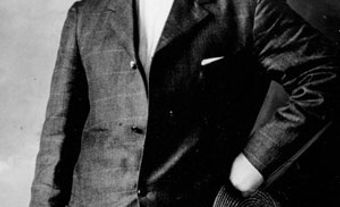
Bourget, Ignace
Ignace Bourget, second Roman Catholic bishop of Montréal (b at Lauzon, Qué 30 Oct 1799; d at Sault-au-Récollet, Qué 8 June 1885). Bourget studied theology and taught at the Séminaire de Nicolet for 3 years before being appointed secretary to Bishop Jean-Jacques Lartigue in 1821, who ordained him in 1822. Energetic, a tireless worker and possessing good judgement, Bourget gained the confidence of his superior, who placed him in charge of construction of the bishop's palace and St-Jacques Cathedral. Bourget saw both completed by 1825.Lartigue recommended Bourget to Rome and on 25 July 1837 Bourget was installed as his coadjutor with right of succession, which took effect at Lartigue's death on 19 April 1840. His vast diocese covered the area from the American border to James Bay and encompassed the 22 000 Roman Catholics of Montréal, 79 parishes, 34 mission churches and 4 Native missions; in all a population of 186 244 souls.
Faced with a task that would have discouraged anyone else, the new bishop assigned the training of future priests to the Sulpicians and established a newspaper, Les Mélanges religieux, to spread "good principles." His greatest achievement lay in persuading French religious orders to come from Europe to help promote the "Christianization" of his diocesans. In addition, he supplemented their efforts with the work of indigenous religious institutions that he either inspired or founded.
Under Bourget's leadership, the clerical hold on the population of the Montréal diocese increased over the years. Male and female religious orders were given an increasingly important role in both elementary education and the classical colleges that he personally directed; hospitals and charitable organizations were also administered by religious orders.
The activity inspired by Bourget met with a heated reaction from the sector of the lower middle class that had been converted to the liberal principles of the INSTITUT CANADIEN and the democratic PARTI ROUGE. Two ideological groups struggled to be the dominant influence on French Canadian society.
Bourget led the ultramontanes, who maintained that the state should be linked to and dominated by the church (see ULTRAMONTANISM), while his liberal opponents demanded separation of church and state, and the exclusion of the clergy from politics. After 30 years of struggle, which culminated in the GUIBORD AFFAIR, victory went to Bourget, who repeatedly attacked the Institut until it was virtually annihilated by 1885.
No other Canadian bishop of the time was as attentive to the directives from Rome or as fervent a supporter of the papal cult. Bourget's zeal inspired the raising of 507 ZOUAVES, who from 1868 to 1870 were sent from his diocese to defend the papal state. Despite his attachment to Rome, Bourget did not always obtain the support of the religious orders. In addition to his struggle with the Sulpicians over the subdivision of the parish of Notre-Dame, his most significant failure lay in his efforts to obtain an independent university in Montréal.
Following pressure from the Séminaire and the archbishop of Québec, Rome agreed only to the establishment of a "satellite" of Université Laval. This failure, and the controversy surrounding ultramontane involvement in politics, led to Bourget's resignation as bishop of Montréal in September 1876. In poor health, he celebrated his diamond sacerdotal anniversary on 9 November 1882 and retired from public life.
The monument erected in Bourget's honour in the centre of the memorial chapel of bishops and archbishops of Montréal is a symbol of the role he played in the history of the diocese. Current historiography is increasingly critical of his religious and political views. But despite his shortcomings, his achievements make him one of the great architects of Québec society.

 Share on Facebook
Share on Facebook Share on X
Share on X Share by Email
Share by Email Share on Google Classroom
Share on Google Classroom


